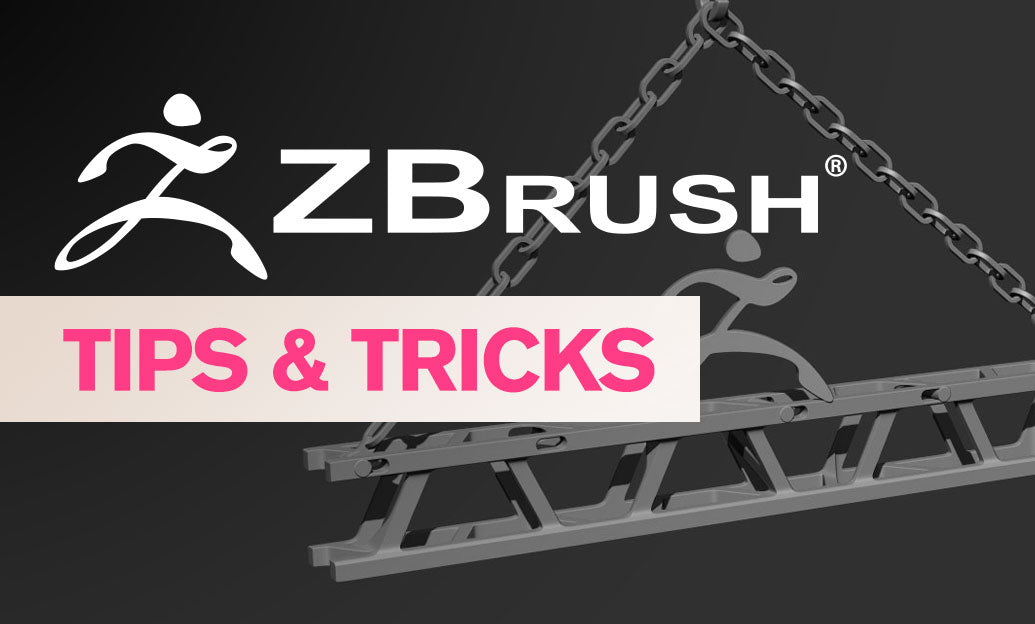Your Cart is Empty
Customer Testimonials
-
"Great customer service. The folks at Novedge were super helpful in navigating a somewhat complicated order including software upgrades and serial numbers in various stages of inactivity. They were friendly and helpful throughout the process.."
Ruben Ruckmark
"Quick & very helpful. We have been using Novedge for years and are very happy with their quick service when we need to make a purchase and excellent support resolving any issues."
Will Woodson
"Scott is the best. He reminds me about subscriptions dates, guides me in the correct direction for updates. He always responds promptly to me. He is literally the reason I continue to work with Novedge and will do so in the future."
Edward Mchugh
"Calvin Lok is “the man”. After my purchase of Sketchup 2021, he called me and provided step-by-step instructions to ease me through difficulties I was having with the setup of my new software."
Mike Borzage
Integrating Additive Manufacturing with CAD: Revolutionizing Design and Production Workflows
April 25, 2025 7 min read


Introduction and Context
The evolution of design paradigms in the engineering world has witnessed a significant transformation with the emergence and rapid adoption of **additive manufacturing** alongside traditional CAD systems. In recent years, industries have experienced a paradigm shift where the integration of these two powerful technologies is no longer viewed as optional, but rather as a strategic necessity. Additive manufacturing, often recognized by its capabilities in rapid prototyping and direct part fabrication, is disrupting established processes that have long revolved around conventional subtractive methodologies inherent to **traditional CAD systems**. Despite the compact nature of this introduction, it is important to appreciate the broad context in which these technologies operate, the rationale behind their convergence, and the potential impact they can have on product design, prototyping, and production cycles. The contemporary design environment is marked by an ever-increasing need for agility in concept development and execution, while simultaneously demanding exceptional precision and customization levels in final products. This intersection is providing a fertile ground for innovation, where the integration of additive manufacturing into established CAD workflows offers both profound opportunities and complex challenges—a situation that compels designers, engineers, and manufacturing specialists to rethink the traditional boundaries between design, simulation, and physical production. Several dominant factors drive this change, including the continuous demand for improved design iterations, the exponential growth of product personalization, and the imperative to reduce time-to-market without compromising on quality. Moreover, the integration journey is underscored by technical and procedural challenges that require organizations to align cross-disciplinary expertise with advanced digital strategies. Among these challenges are maintaining the fidelity of design data during format conversions and ensuring that simulation tools can accurately predict the behaviors and constraints of additively manufactured components. This convergence, therefore, demands an in-depth exploration of both technological capabilities and transformative business strategies that empower design teams to embrace innovation while being mindful of the inherent risks associated with adapting to new, hybrid workflows. The discussion that follows presents a detailed examination of these considerations and sets the stage for understanding how the synthesis of additive manufacturing and CAD systems is reshaping the future of design and production.
Benefits and Challenges of Integration
Integrating additive manufacturing with traditional CAD systems has emerged as a turning point for engineering and design workflows, as this fusion presents a multitude of benefits that significantly improve iterative design processes and rapid prototyping capabilities. One of the most evident advantages is the dramatic improvement of design iterations, which is largely attributed to the **rapid prototyping** capabilities inherent to additive manufacturing. Integrating these processes allows designers to quickly build, test, and refine prototypes, which leads directly to advanced customization and component optimization. This results in improved products with enhanced performance owing to the possibility of fine-tuning intricate designs that are unachievable with conventional subtractive techniques. Furthermore, companies that embrace these integrated methodologies have raised their competitive edge by reducing the time-to-market through streamlined workflows that remove intermediate stages of design validation and physical prototype construction. In addition, when engineering teams combine robust digital models from CAD with the physical insights gleaned from additive manufacturing, they create a continuous feedback loop that fosters innovation and operational efficiency. Alongside these primary benefits, there remain several significant challenges that must be addressed during integration. Some of the most notable hurdles include ensuring compatibility and interoperability between the diverse range of software tools in use, which is critical to maintaining the integrity of the design data and optimizing the production processes. Equally important is the need for specialized training and ongoing skill development among designers and engineers. These professionals must not only be proficient in conventional CAD but also gain a deep understanding of the nuances of additive manufacturing, which requires an entirely different approach to design optimization and validation. Moreover, managing the transition from well-established, subtractive manufacturing techniques to hybrid production processes calls for a reformation of traditional methodologies in favor of more adaptive and innovative mindsets. To further illustrate the multifaceted nature of this integration, consider the following key points:
- Improved design iterations and rapid prototyping capabilities: The integration reduces the iteration cycle time by converting digital designs directly into physical prototypes with minimal delay.
- Enhanced customization and optimization of components: Products can be customized to individual specifications, offering a significant competitive advantage in markets that demand tailored solutions.
- Reduced time-to-market through streamlined workflows: By eliminating redundant steps in the design process, companies can move from concept to final product more swiftly.
Strategies for Seamless Integration
As industries increasingly recognize the transformational potential inherent in merging **additive manufacturing** with established CAD workflows, a clear set of best practices has emerged to guide firms through this sophisticated integration process. Achieving a seamless integration environment requires a systemic approach wherein dedicated modules, standardized protocols, and collaborative cross-disciplinary teams collectively reduce inefficiencies and optimize performance. A critical enabling factor is the implementation of standardized data exchange formats and protocols. By ensuring that CAD data is compatible with additive manufacturing processes, companies can minimize discrepancies between digital models and their physical counterparts. This includes adopting industry-wide communication standards that facilitate the smooth transition of complex geometries, thereby reducing the risks associated with data conversion errors. Moreover, the utilization of plugins or dedicated modules that enhance the existing CAD platforms is another strategic lever to improve integration success. These modules are designed to not only bridge the gap between digital design and production but also to empower design teams to simulate additive processes in the virtual environment, thus identifying potential weaknesses or optimization opportunities early in the product development cycle. The role of advanced simulation and analysis tools in this context cannot be overstated; they not only validate design feasibility but also provide critical insights into material performance, thermal effects, and structural integrity in additively manufactured components. Organizations can ensure effective implementation by focusing on several strategic actions, such as:
- Implementing standardized data exchange formats and protocols: This reduces miscommunication between different software and hardware systems, ensuring design intent is maintained.
- Utilizing plugins or dedicated modules: These tools help to create a smoother workflow between design and production, removing technical barriers and reducing the learning curve.
- Developing collaborative processes: Fostering close collaboration between design, engineering, and manufacturing teams ensures that all perspectives are integrated, leading to more robust and production-ready designs.
Conclusion
In summary, the integration of **additive manufacturing** with **traditional CAD systems** represents a transformative evolution in design and production workflows that is poised to redefine the future of engineering and manufacturing. When these two domains successfully converge, organizations witness dramatic improvements in design iterations, customization capabilities, and overall time-to-market, fostering a competitive environment where innovation is the norm rather than the exception. While the journey toward this integrated approach is replete with challenges—including compatibility issues, the need for extensive professional training, and the complexities associated with reconciling digital and physical manufacturing processes—the ongoing advancements in simulation tools and collaborative technologies provide a robust framework for mitigating these concerns. It becomes increasingly clear that a forward-looking strategy, which leverages standardized protocols, dedicated integration modules, and cross-functional teamwork, is essential to unlocking the full potential of a hybridized production approach. Moreover, as the landscape of design software continues to evolve with rapid technological advancements, continued innovation and adaptive methodologies will be key to sustaining growth and maintaining a competitive edge in a transforming market. The pivotal role of integrated simulation and analysis systems further underscores the emergent paradigm where every design decision is backed by data-driven insights, ensuring that the transition from concept to production is not only seamless but also optimized for quality and performance. Looking ahead, the integration of these two dynamic fields is anticipated to fuel further research and development, opening doors to new opportunities that could fundamentally alter the manufacturing ecosystem. By embracing a strategic, well-coordinated approach to integration, industries can assure themselves of a future where digital design and physical production coalesce into a unified, efficient, and highly innovative process.
Also in Design News

ZBrush Tip: Maximize Your Workflow with Sculptris Pro Mode in ZBrush
April 26, 2025 2 min read
Read More
Revit Tip: Optimizing Revit Project Browser Filters for Enhanced Workflow Efficiency
April 26, 2025 2 min read
Read More
AutoCAD Tip: Maximize AutoCAD Efficiency with the Drawing Recovery Manager
April 26, 2025 2 min read
Read MoreSubscribe
Sign up to get the latest on sales, new releases and more …


